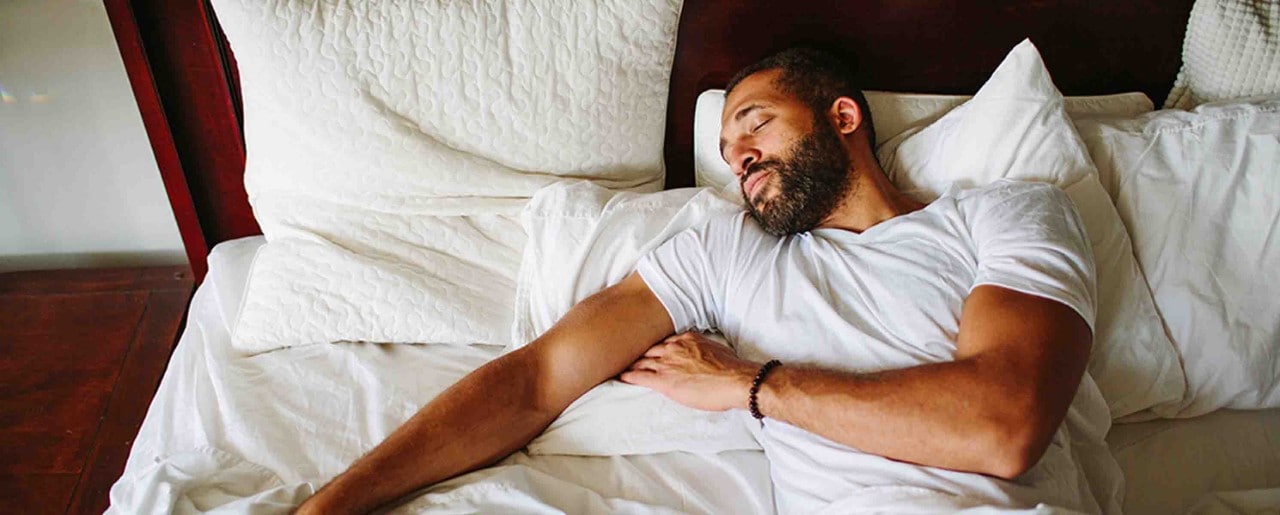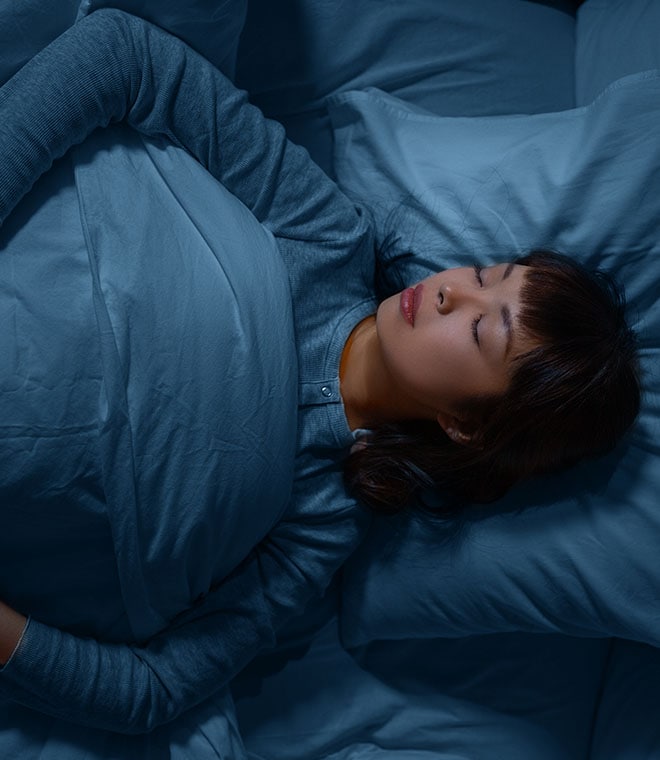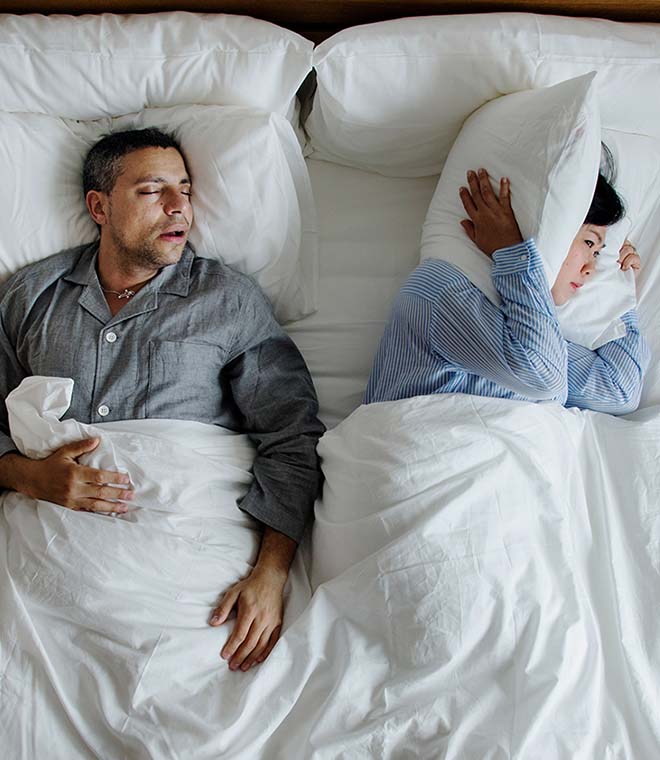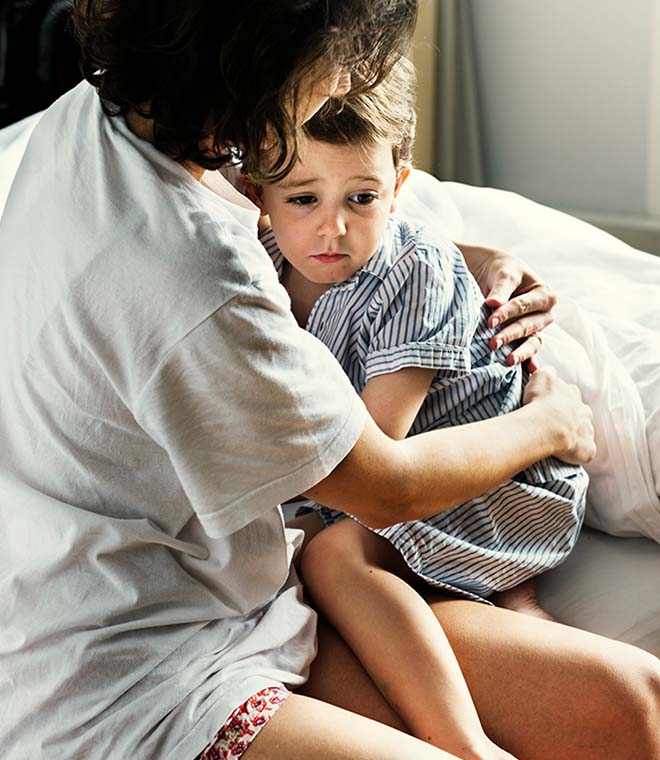Wellness
Testing for sleep apnea: How does it work?
By Andy Stergachis, PhD, BPharm Jan 29, 2025 • 6 min
Obstructive sleep apnea is a potentially serious condition that occurs when the upper airway is blocked during sleep. This reduces or stops airflow, which causes breathing to repeatedly stop and start again. While obstructive sleep apnea is the most common form of the condition, some people may experience central sleep apnea. Central sleep apnea occurs when the brain does not send the signals needed to breath. Symptoms of obstructive sleep apnea and central sleep apnea may overlap, and some people may experience both conditions.
The common signs and symptoms of sleep apnea include loud snoring, gasping for air or breathing pauses during sleep, and excessive tiredness or sleepiness during the day. To determine if you have sleep apnea, your healthcare provider may evaluate your signs and symptoms, conduct an examination and order tests. Your provider may also refer you to a sleep center where you'll see a sleep specialist.
Sleep apnea testing
A common test for sleep apnea is a sleep study, also called polysomnography. This comprehensive test is usually done at a sleep center or a sleep disorders unit in a hospital and often involves an overnight stay there. At a sleep center, a healthcare professional is on-site to monitor you. Polysomnography helps monitor your breathing and other body functions while you sleep, such as oxygen levels in your blood, heart rhythms and limb movements. It detects the number of apnea events, which are times when your breathing stops or slows during sleep. It also determines whether your blood oxygen levels are lower during apnea events. A sleep specialist analyzes the results to determine if you have sleep apnea.
How does an at-home test for sleep apnea work?
In some cases, your healthcare provider may recommend a home sleep apnea test, which allows you to spend the night in your own bed. Home tests for sleep apnea generally monitor your breathing rate and airflow, as well as oxygen levels and heart rate. Home test results also may include information on blood vessels. Home tests are available by prescription only, and these tests focus mainly on diagnosing obstructive sleep apnea.
According to the American Academy of Sleep Medicine, a home sleep apnea test can be used for the diagnosis of sleep apnea in most adults with suspected moderate to severe obstructive sleep apnea who have no other serious medical problems. Studies support the use of home sleep apnea testing in reliably diagnosing people with moderate to severe obstructive sleep apnea. However, overnight studies at a sleep center are a gold standard for diagnosis and give a more thorough assessment of sleep disorders. An overnight sleep study at a sleep center or hospital may be better for people with certain medical conditions, such as heart or neuromuscular problems.
Home sleep apnea testing is an alternative, less-costly method of diagnosing obstructive sleep apnea. If the results are unclear, your healthcare provider may recommend a polysomnography at a sleep center or sleep disorders unit in a hospital.
What to expect during testing for sleep apnea
If you are referred to a center for a sleep study, you may bring items you use for your bedtime routine, and you can sleep in your own pajamas. You may be advised to avoid drinks or food containing alcohol or caffeine during the afternoon and evening before polysomnography. You'll likely also be told to avoid napping in the afternoon before the sleep study. Follow all instructions for the test as directed by your healthcare provider. After you get ready for bed, sensors will be placed on different locations on your body. The sensors are connected by wires to a computer, but you can still move around in bed. A small clip will also be placed on your finger or ear to measure oxygen in your blood.
If your doctor prescribes a home sleep apnea test, you will likely pick up your test from your doctor's office or the test will be delivered to you. The equipment you’ll receive will depend on the type of test your medical provider orders, but it usually involves wearing a few small sensors overnight. You'll also be given instructions on how to use the equipment. After completing your home sleep apnea test, a healthcare professional will review the information collected during the test. It may take a few days or weeks to get your results.
Whether your doctor recommends home testing or a sleep study at a sleep center, it is important to get an accurate diagnosis for sleep apnea. If you have sleep apnea, work with your healthcare team to find a treatment plan that works best for you.
Updated January 2025.
Sources:
- https://www.nhlbi.nih.gov/health-topics/sleep-apnea
- https://www.mayoclinic.org/diseases-conditions/sleep-apnea/diagnosis-treatment/drc-20377636
- https://www.sleepfoundation.org/sleep-studies/at-home-sleep-study
- https://www.health.harvard.edu/staying-healthy/trending-now-home-sleep-tests
- https://pubmed.ncbi.nlm.nih.gov/28162150/
- https://pubmed.ncbi.nlm.nih.gov/32334876/
- https://www.uptodate.com/contents/clinical-presentation-and-diagnosis-of-obstructive-sleep-apnea-in-adults
- https://www.mayoclinic.org/tests-procedures/polysomnography/about/pac-20394877
- https://www.hopkinsmedicine.org/health/wellness-and-prevention/what-to-know-about-an-at-home-sleep-test
- http://sleepeducation.org/essentials-in-sleep/sleep-apnea/diagnosis



